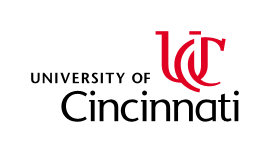FIP, as the global leader for pharmacy, has taken the initiative to build the “FIP World List of Pharmacy Schools”, which will be the most comprehensive and up-to-date list of pharmacy institutions from around the world. This global list is intended to guide all pharmacy stakeholders, from students to policymakers, in assessing the appropriateness and effectiveness of pharmacy education strategies. The availability, completeness and quality of FIP’s World List of Pharmacy Schools means it will provide a unique source of information for pharmaceutical workforce policies, procedures and plans.
Further background on the FIP World List of Pharmacy Schools:
The FIP World List of Pharmacy Schools is an initiative to monitor pharmaceutical capacity and capability, similar to those of many other global organisations, such as the World Medical Schools List held by the World Medical Association. Given 2021 is the World Health Organization’s Year of Health and Care Workers, the need for our global organisations to demonstrate increased capacity in all health workers is key to ensure our professions are not further diminished but amplified.
FIP is a founder member of the World Health Professions Alliance (WHPA) with doctors, nurses, dentists, and physiotherapists. All WHPA members have been requested to feedback their schools’ status to the WHO as part of pandemic preparedness, and FIP having a list of accredited pharmacy schools will help to identify where schools may be needed and created to ensure long-term pharmaceutical workforce capacity.

University of Cincinnati
James L. Winkle College of Pharmacy
History In Brief
The University of Cincinnati, Ohio’s premier urban research university, traces its origins to 1819. In that year both Cincinnati College and the Medical College of Ohio were chartered. In 1870, the City of Cincinnati established the University of Cincinnati, which later absorbed the two predecessor institutions. In 1906, the University of Cincinnati created the first cooperative education program in the world. For many years, the University of Cincinnati was the second oldest and second largest municipal university in the country. In 1968, UC became a “municipally sponsored, state affiliated” institution, entering a transitional period culminating on July 1, 1977, when UC joined the university system of Ohio. Today, the University of Cincinnati is classified as a Research University (Very High Research Activity) by the Carnegie Commission and is ranked as one of America’s top 25 public research universities by the National Science Foundation. U.S. News has ranked UC in the Top Tier of America's Best Colleges. The Chronicle of Higher Education calls UC a "research heavyweight." Forbes and Delta Sky magazines have named UC one of the world's most beautiful campuses. UC has been named a "green university" by Princeton Review.
Mission
The University of Cincinnati serves the people of Ohio, the nation, and the world as a premier, public, urban research university dedicated to undergraduate, graduate, and professional education, experience-based learning, and research. We are committed to excellence and diversity in our students, faculty, staff, and all of our activities. We provide an inclusive environment where innovation and freedom of intellectual inquiry flourish. Through scholarship, service, partnerships, and leadership, we create opportunity, develop educated and engaged citizens, enhance the economy and enrich our university, city, state and global community
